The much-anticipated opening ceremony of the PyeongChang Winter Olympics was finally revealed to the world on Friday. Global media scampered to comment on the ceremony’s prominent points, which included the use of drones to create the Olympic flag mid-air and a creepy yet intriguing bird puppet with a human face.
The following are three additional pieces of trivia about some of the ceremony’s other highlights.
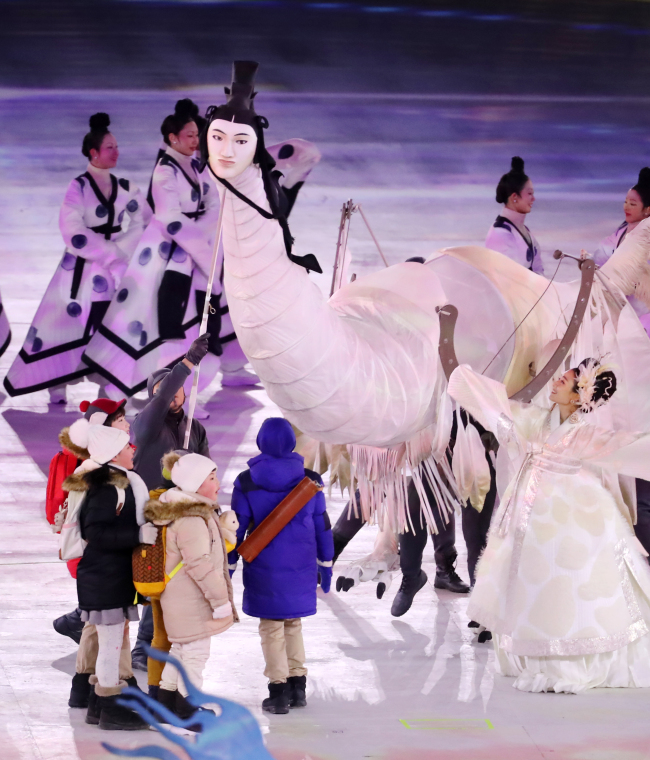 |
The PyeongChang Winter Olympics opening ceremony took place last Friday. (Yonhap) |
1. The constellation dome was only visible to TV viewers.
Near the end of the ceremony, which traced Korea’s history and traditions through media art and technology, fireflies shot up to the air as particles of light. These particles scattered to become stars, forming a dome of constellations encompassing the circular stage inside PyeongChang Olympic Stadium, where the ceremony took place.
This star-sprinkled igloo, however, was created through augmented reality and only visible to viewers watching the ceremony via TV screen, and thus not witnessed by those present at the stadium.
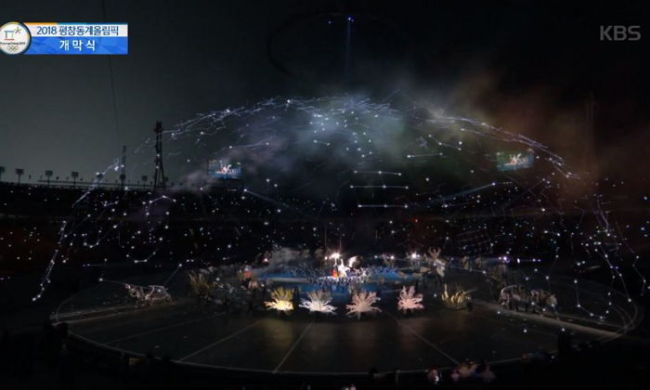 |
Cheonsang Yeolcha Bunyajido augmented reality light show (KBS) |
According to opening ceremony executive producer Yang Jung-woong’s interview with local media, the technology for the AR dome was developed in partnership with CJ Entertainment. CJ had previously used the technology in concerts, Yang said.
The constellations depicted the Cheonsang Yeolcha Bunyajido, a 14th-century star map from the Joseon Dynasty which shows 264 constellations. It is one of the oldest existing astronomical charts in the world. The name translates into “chart of the constellations and the regions they govern” in English. Joseon’s King Taejo ordered royal astronomers to carve the constellations on a flat stone, currently exhibited at the National Palace Museum in Seoul.
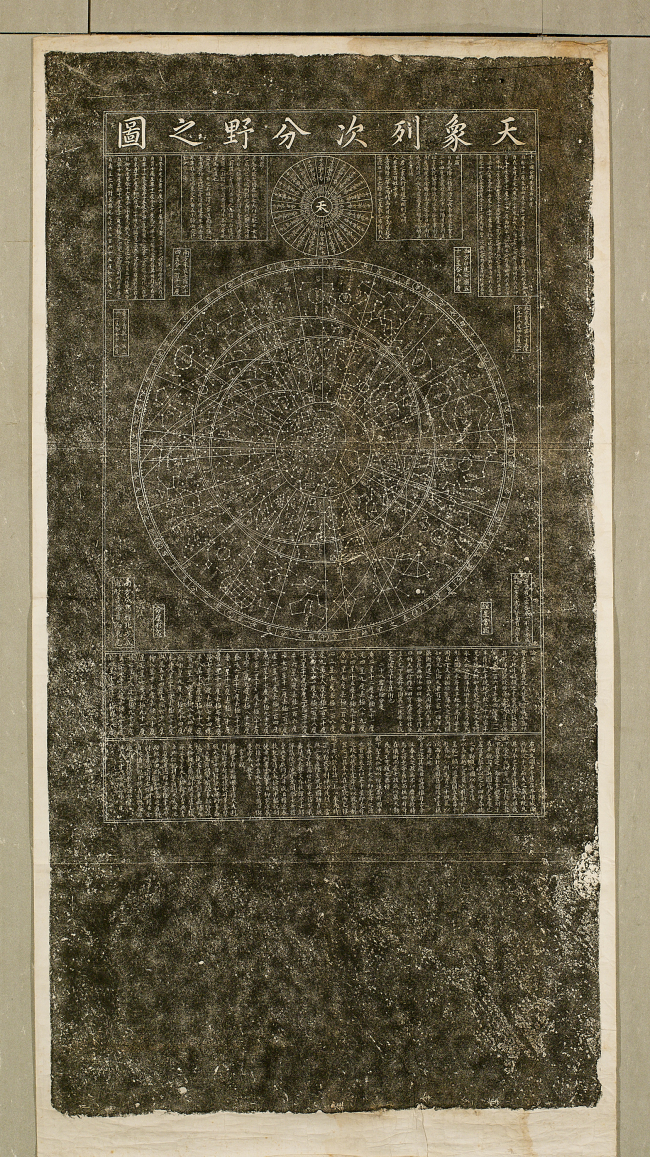 |
Cheonsang Yeolcha Bunyajido (National Palace Museum) |
The entire ceremony was an ode to light as rays projected onto the circular stage depicted a rich array of different scenes. Image mapping technology was used to create the red-and-blue taegeuk mark, Korea’s symbol of harmony. The dresses of the janggu players, who beat the Korean hourglass-shaped drum, changed color through light.
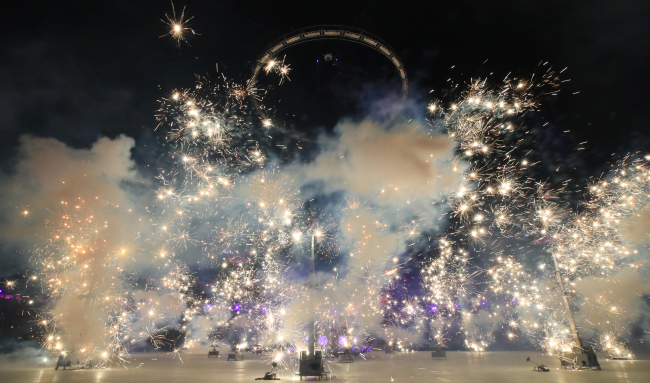 |
The PyeongChang Winter Olympics opening ceremony took place last Friday. (Yonhap) |
 |
The PyeongChang Winter Olympics opening ceremony took place last Friday. (Yonhap) |
2. Why were there five children running around?
The ceremony kicked off with five children, dressed in red, blue, yellow, beige and black, heading off on an adventure through time. At one point, the children hopped onto a wooden raft gliding through a buckwheat field created by projected light and computer graphic 3-D imagery. The Jeongseon Arirang folk song came on in the background.
The five children symbolize the five elements of fire, water, trees, metal and earth. They are each respectively named Haenarae, Ara, Puri, Bichae and Nuri.
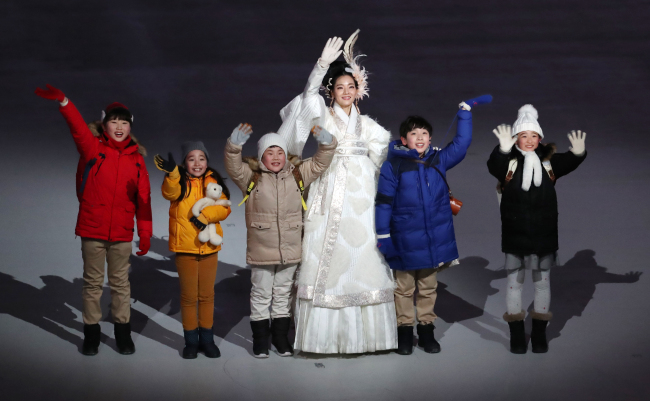 |
Five children represent the five elements at the PyeongChang Winter Olympics opening ceremony last Friday. (Yonhap) |
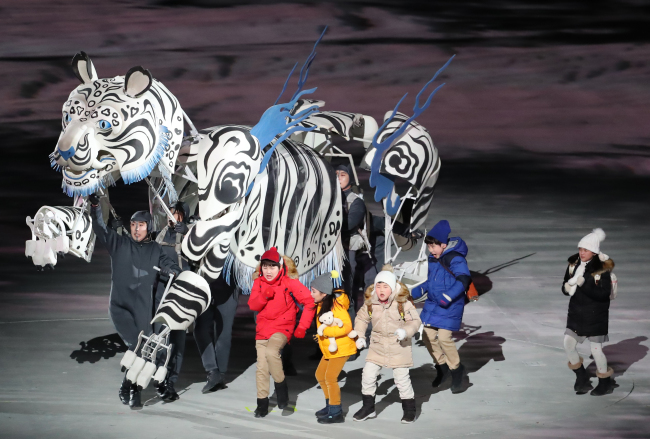 |
A white tiger puppet guides five children through Korean history at the PyeongChang Winter Olympics opening ceremony last Friday. (Yonhap) |
3. How many animals appeared and what did they mean?
A white tiger, recreated from the wall paintings of Goguryeo, Korea’s first kingdom, acted as a guide leading the five children through Korea’s history.
A blue dragon, black tortoise and phoenix accompanied the tiger. The four animals were regarded as gods that were located in four directions to protect each area and form the universe. The myth was based on a philosophy developed around BC 400, according to the Encyclopedia of Korean Folk Culture.
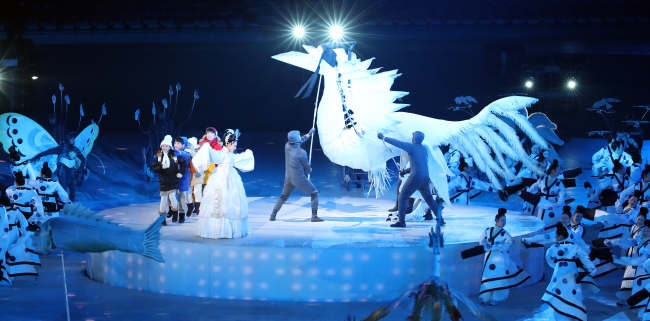 |
A phoenix puppet performs at the PyeongChang Winter Olympics opening ceremony last Friday. (Yonhap) |
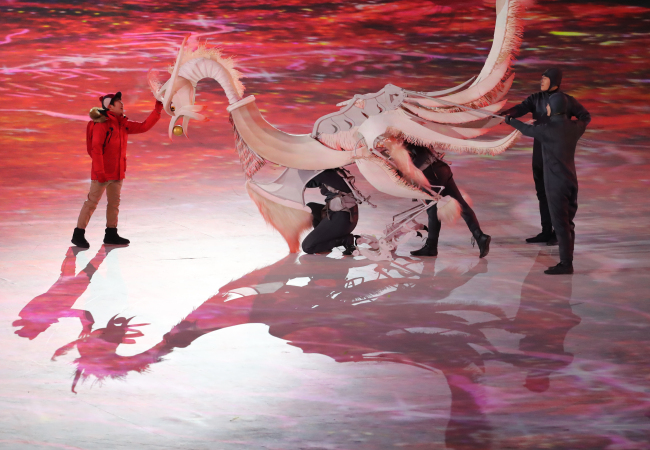 |
A phoenix puppet performs at the PyeongChang Winter Olympics opening ceremony last Friday. (Yonhap) |
Other animals also filled the stage. much-debated human-faced bird Inmyeonjo was traditionally believed by Buddhists during the Goguryeo Kingdom to inhabit paradise. Legend has it that only those with a pure heart would be able to hear the bird’s song, the most beautiful voice in heaven.
By Rumy Doo (
doo@heraldcorp.com)
















